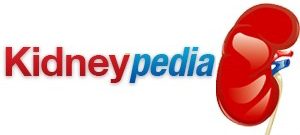The most common cause of renal pain is kidney failure as a result of either infection or kidney stones (medical term –
If it is determined you have a kidney stone(s), this is akin to blocking the flow of your urine, preventing secretion from the body. Your doctor will put a plan in place to care for the removal of the stone. Treatment for a severe stone condition may even require you undergo Lithotripsy, a medical procedure which breaks down kidney stones to a passable level.
To avoid a reoccurrence of this painful ailment, your eating habits in the form of a renal diet need to be a consideration. A renal dietician will advise you it is critical to pay close attention to what you consume, and will place you on a renal diet to promote a healthy urinary tract and proper kidney function.
Restrictions
If you are a sufferer of chronic kidney disease (CKD), education is the key on what you should avoid in your diet. Certain foods will essentially be removed from your diet. Items high in potassium such as bananas, broccoli, chocolate, coffee, leafy greens, beets and dried fruits will be avoided. Instead, you can substitute such foods as cucumbers, pears, onions, cranberries, carrots, apples and rice. These are just a few examples.
In addition to potassium, foods high in protein, phosphorous, and sodium should also be avoided. Because CKD problems characteristically deal with the body’s inability to filter and excrete fluids properly, your doctor or dietician may require limiting your intake of fluids, and instruct you to avoid foods with a high liquid content such as ice cream, gelatin, and fruits and vegetables with high water content.
Menu
Planning a renal diet menu can present its challenges. There are a few simple guidelines to follow even before specific foods are considered. Eat regularly and take care to establish an eating routine … no skipping meals. This regulates your metabolism and is healthier for your bodily constitution.
Another important rule of thumb is to practice portion control. Many nutritionists are now advocating you substitute a salad plate as your normal dinner plate. The use of a salad plate promotes serving up smaller portions, yet is still visually (and psychologically) appealing by filling your plate.
Chronic kidney disease (CKD) is often found hand-
Recipes
With the food restrictions previously listed, you would think your choices of recipes would be minimal. You will be delighted to learn there are thousands of websites offering healthy and flavorful dishes for the CKD and diabetes sufferer. With a bit of planning and education, a change in cooking becomes part of your normal cooking regime without a lot of fuss, and with no loss of flavor. Renal diet dishes promoting a healthy lifestyle can easily become part of your daily cuisine.
